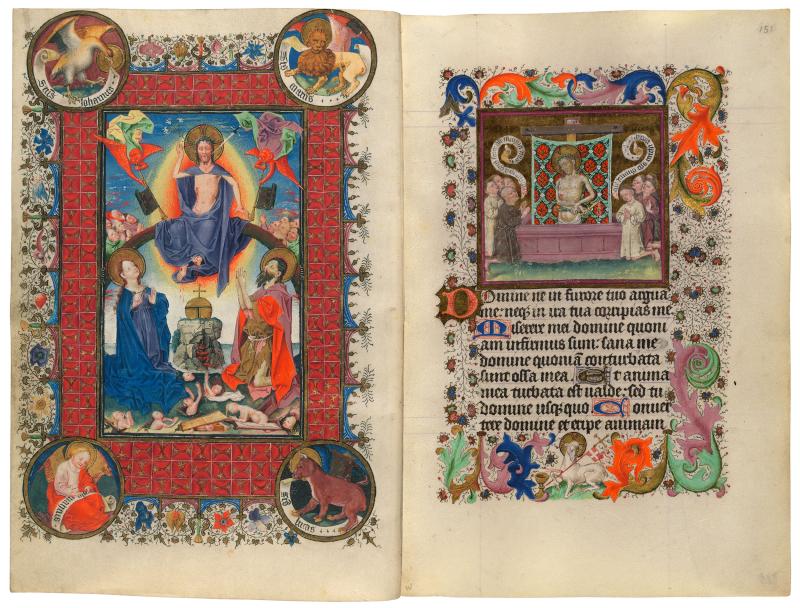
Last Judgment
Man of Sorrows Petitioned by Penitents
Purchased on the Belle da Costa Greene Fund with the assistance of the Fellows, 1963; purchased on the Belle da Costa Greene Fund with the assistance of the Fellows and with special assistance of Mrs. Frederick B. Adams, Sr., Mrs. Robert Charles, Mr. L
Codicological evidence—sewing holes and faint offset stains—confirms that this large Last Judgment occurred at the beginning of the Penitential Psalms. Trumpeting angels awaken the dead. Their intercessors are John the Baptist and Mary (who again bares her breast to her son). Their judge is Christ, who displays his dripping wounds. At his feet is the world, which rests on a rocky island; within a fissure in the rocks lurks a red demon. The smaller miniature is a bit more comforting: penitents approach Christ as the forgiving Man of Sorrows. In the bottom border, the Lamb of God pours his forgiving blood into a Eucharistic chalice.
